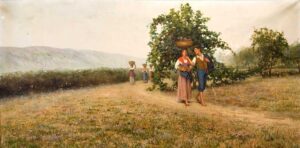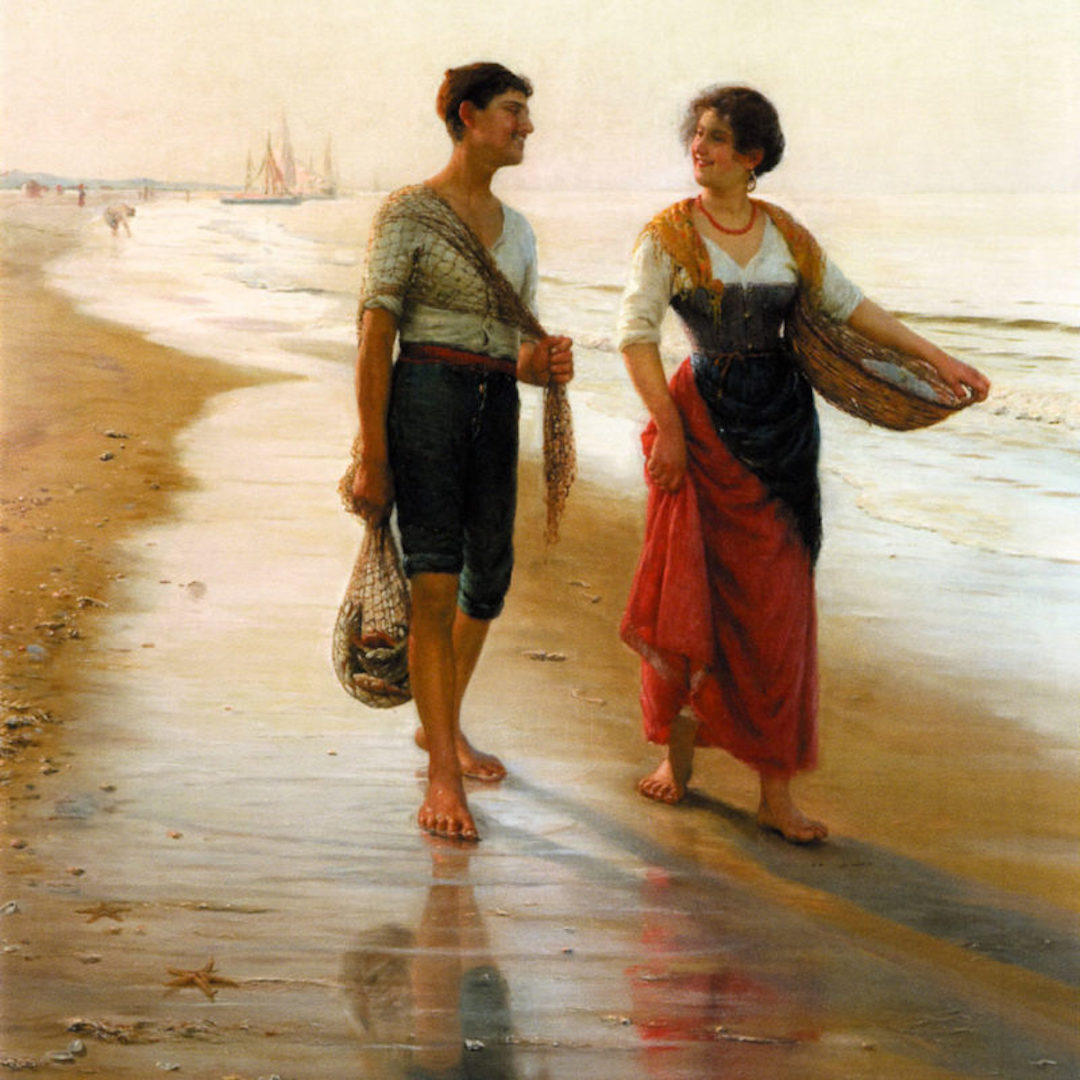Pasquale Celommi, definito il ‘pittore della luce’, è un verista autentico che ha rappresentato con le sue opere definite ‘poesie dipinte’, la società e l’ambiente abruzzese di fine Ottocento.
Nasce nel 1851 da un’umile famiglia a Montepagano: una collina che domina la costa dell’odierna cittadina Roseto degli Abruzzi, l’antica Rosburgo.
I genitori si trasferiscono successivamente proprio a Rosburgo, che in questo periodo inizia a strutturarsi come scalo commerciale dell’abitato medievale di Montepagano.
Le opere che Celommi ci ha lasciato, unitamente a quelle del figlio Raffaello che ne seguì le orme, sono uno splendido spaccato della vita quotidiana che abitano, dove protagonista è sempre la gente abruzzese del mondo contadino e della marineria immortalata nei suoi luoghi naturali.
Le sue opere non possono essere certo definite quadri paesaggistici, però le ‘luminose marine’ dell’Adriatico e gli inconfondibili paesaggi agresti cui fanno sempre da sfondo i contorni dell’Appennino Abruzzese, sono il ritratto inconfondibile della natura rustica tra mare e monti dell’Abruzzo.


Tre gli esempi più alti della produzione di Pasquale Celommi troviamo L’operaio politico e La pescivendola, in questi dipinti il pittore si avvicina all’esperienza del verismo sociale: la stanchezza degli occhi dell’anziana pescivendola e la caparbietà con cui il vecchio operaio legge il giornale, danno l’idea di una ricerca o almeno di una voglia di cambiamento ed emancipazione che fu molto forte in Abruzzo.


Elemento ricorrente nelle opere della produzione di Pasquale Celommi è la canestra o paniere o nassa da pesca che veniva realizzata dai canestrai, contadini e pastori che nei ritagli di tempo si dedicavano all’antica arte dell’intreccio di vimini, giunchi, rami di castagno o verghe di olivo. Questa pratica ancora oggi è attuale in alcuni centri agricoli e montani dell’Abruzzo.
L’opera forse di maggior successo è stata Il Ciabattino, del 1895, dove Pasquale Celommi riesce ad esprimere tutta la sapienza e la serenità dell’artigiano che compie quei gesti ripetuti chissà quante volte, gli stessi gesti che sono nei ricordi infantili di Celommi, figlio di un ciabattino di Montepagano.

LA SCIABICA DA SPIAGGIA E LA PICCOLA PESCA
La sciabica da spiaggia è una tecnica di pesca praticata dai pescatori delle coste sabbiose del Medio Adriatico con una barca a remi che calava una rete a strascico in acque non profonde e non lontane dalla spiaggia.
Fino ai primi anni del 900′ le reti da sciabica erano realizzate in canapa macerata e lasciate ad asciugare al sole.
Il filo ricavato veniva successivamente cucito dalle donne cui spettava il compito di fabbricare le reti, il compito di ripulirle e ripararle prima di rimetterle in mare invece, era affidato agli anziani.
Questa l’opera Il pescato della sciabica.

In molte marinerie abruzzesi ci sono ancora esempi di piccola pesca da spiaggia, talvolta incentivate dalle stesse amministrazioni comunali. Nell’area antistante l’attracco, sono poi le donne che attrezzano la vendita immediata del pescato mentre gli anziani, nel dedicarsi al riparo delle reti, si lasciano andare a ricordi e racconti che se si ha la fortuna di trovarli di buona vena sono un’esperienza da vivere per capire e conoscere meglio un pezzo di Abruzzo.
Chiedi informazioni sulle opere di Celommi e su dove trovare ancora esempi di piccola pesca, ti daremo le giuste indicazioni per un’esperienza davvero your stay in Abruzzo really cozy..





